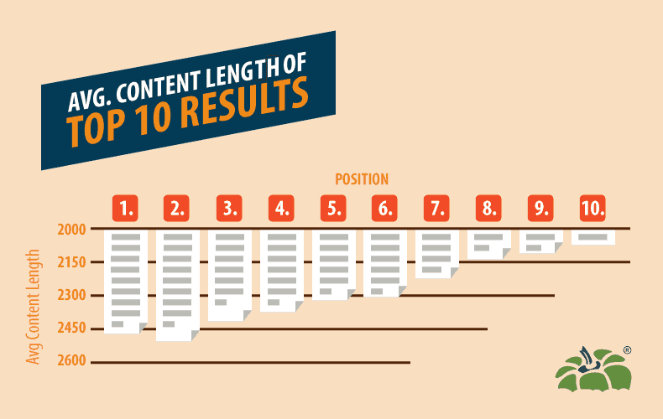Are you curious about how long is a typical blog post? You’re not alone. Many bloggers and content creators grapple with this question daily. The length of your posts can significantly impact your audience’s engagement, SEO performance, and even your authority in the niche.
In today’s fast-paced digital world, readers are bombarded with information at every turn. Capturing their attention quickly has never been more crucial. But does that mean shorter posts are better? Or should you dive deep into longer pieces for more comprehensive insights?
This article will explore the nuances of blog post length, offering valuable insights to help you determine what’s best for your content strategy. Whether you’re a seasoned writer or just starting out, understanding these elements will elevate your blogging game to new heights. Let’s dig in!
Why the Length of a Blog Post Matters
The length of a blog post plays a pivotal role in how your content is received. It influences readability, engagement, and even shareability.
When readers encounter an article that’s either too short or too long, they may lose interest quickly. A well-structured post invites them to explore your ideas fully and encourages them to stay on the page longer.
Search engines also take note of length when ranking content. Posts that provide depth often rank higher because they tend to cover topics more thoroughly.
Moreover, longer posts can establish authority. When you present detailed insights and valuable information, readers are more likely to view you as an expert in your field.
Finding the right balance in length fosters connection with your audience while optimizing for search visibility. This blend can ultimately lead to better engagement rates and increased traffic for your blog.
Factors that Determine the Ideal Length
The ideal length of a blog post isn’t one-size-fits-all. Several factors come into play.
First, consider your target audience. Different readers have varying preferences for content depth and complexity. Some may appreciate concise information, while others seek detailed analysis.
Next, think about the topic itself. A complex subject often requires more explanation, whereas straightforward topics can be efficiently covered in fewer words.
SEO also plays a significant role. Search engines favor posts that are informative and engaging rather than artificially lengthy or overly brief.
Your goals matter too. Are you aiming to educate? Entertain? Drive traffic? Aligning your content’s length with these objectives ensures you meet reader expectations effectively.
The Debate: Short vs Long Blog Posts
The debate between short and long blog posts is ongoing. Some readers prefer concise content that gets straight to the point. They appreciate brief insights packed into quick reads.
On the other hand, many believe longer posts provide more value. These articles can delve deeper into complex topics, offering thorough explanations and rich details.
Short posts are often easier to share on social media. They cater well to audiences with limited attention spans who want instant information.
Longer pieces typically rank better in search engines when crafted effectively. They allow for keyword optimization and provide ample opportunities for backlinks.
Your audience’s preferences should guide your choice of length. Understanding what resonates with them will help you strike the right balance in crafting engaging content, regardless of its size.
Ideal Word Count for SEO
When considering how long is a typical blog post, word count plays a pivotal role in SEO success. Research suggests that posts between 1,500 to 2,500 words tend to perform well. This length allows for comprehensive exploration of topics while maintaining reader engagement.
Longer content often ranks better on search engines. It provides more opportunities for keyword integration and backlinks, enhancing authority and visibility.
However, quality trumps quantity every time. A concise article that delivers value will outperform lengthy pieces filled with fluff. Focus on the depth of information rather than just hitting a specific word count.
Regularly updating your longer articles can also boost their performance over time. Search engines favor fresh content that reflects current trends or data updates.
Find the balance between informative detail and reader interest to optimize your posts effectively for SEO purposes.
Tips for Writing Engaging Blog Posts of Any Length
Crafting engaging blog posts requires creativity and intention. Start with a captivating headline that piques interest. This is your first impression, so make it count.
Next, use storytelling to draw readers in. Share personal anecdotes or relatable experiences to create an emotional connection. People love narratives; they keep them hooked.
Incorporate visuals throughout your post. Images, infographics, or videos break up text and enhance understanding. They also cater to various learning styles.
Don’t overlook formatting either. Use bullet points and subheadings for clarity. Short paragraphs improve readability on screens.
Ask questions within the content to encourage interaction. This invites readers to reflect and engage more deeply with your topic.
Always edit ruthlessly for clarity and tone consistency. A polished piece enhances credibility and keeps the audience returning for more insightful content.
Conclusion
Understanding the ideal length of a blog post can greatly influence your content strategy. A well-crafted piece not only attracts readers but also retains their attention and encourages engagement. The debate between short and long posts continues, but what truly matters is quality over quantity.
For SEO purposes, targeting an optimal word count can enhance visibility in search engines. However, regardless of length, focusing on engaging narratives will keep your audience coming back for more.
As you craft your next blog post, remember to prioritize clarity and relevance while considering the preferences of your target audience. This balance is key to creating effective content that resonates with readers and meets their needs. Adjusting your approach based on feedback can lead to continual improvement in both writing skills and reader satisfaction.


